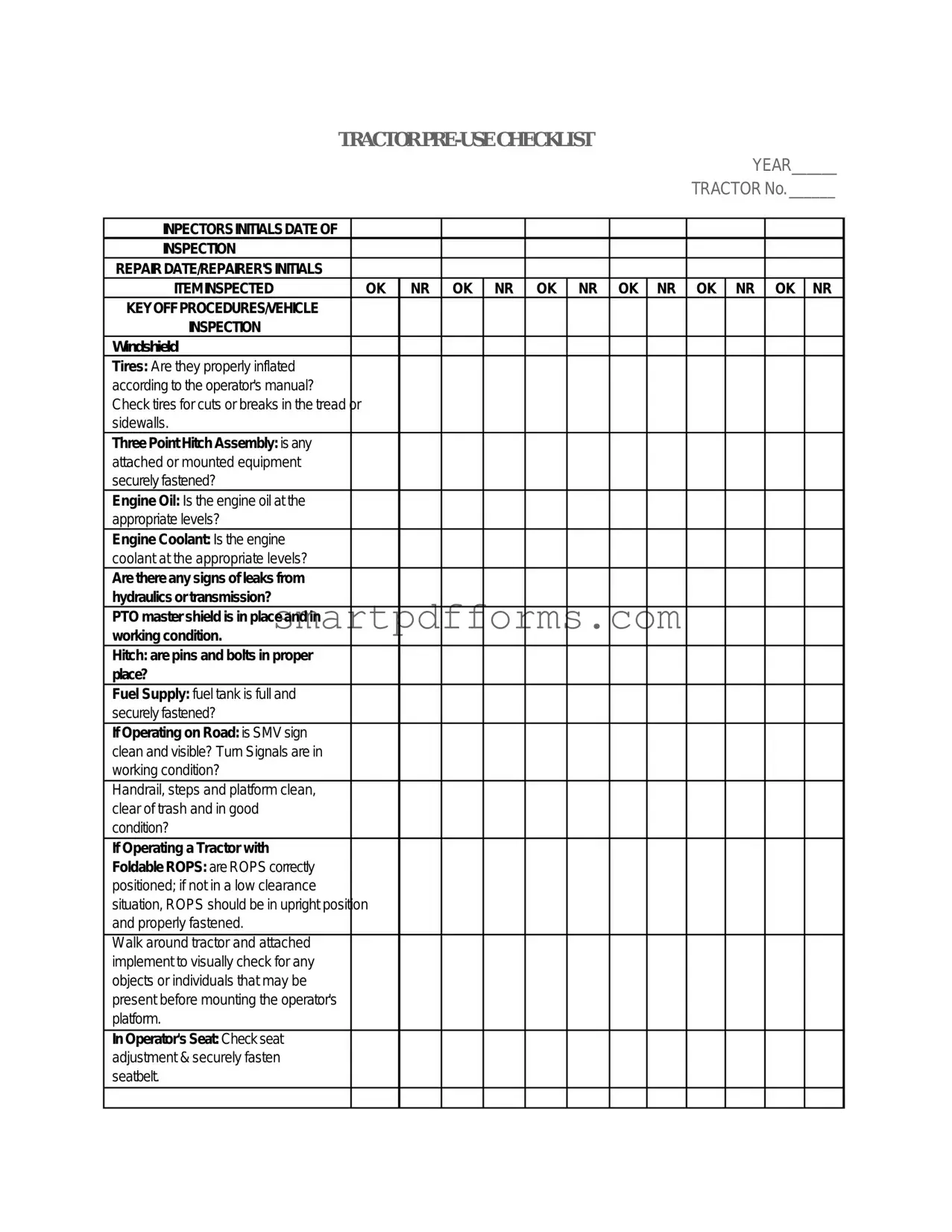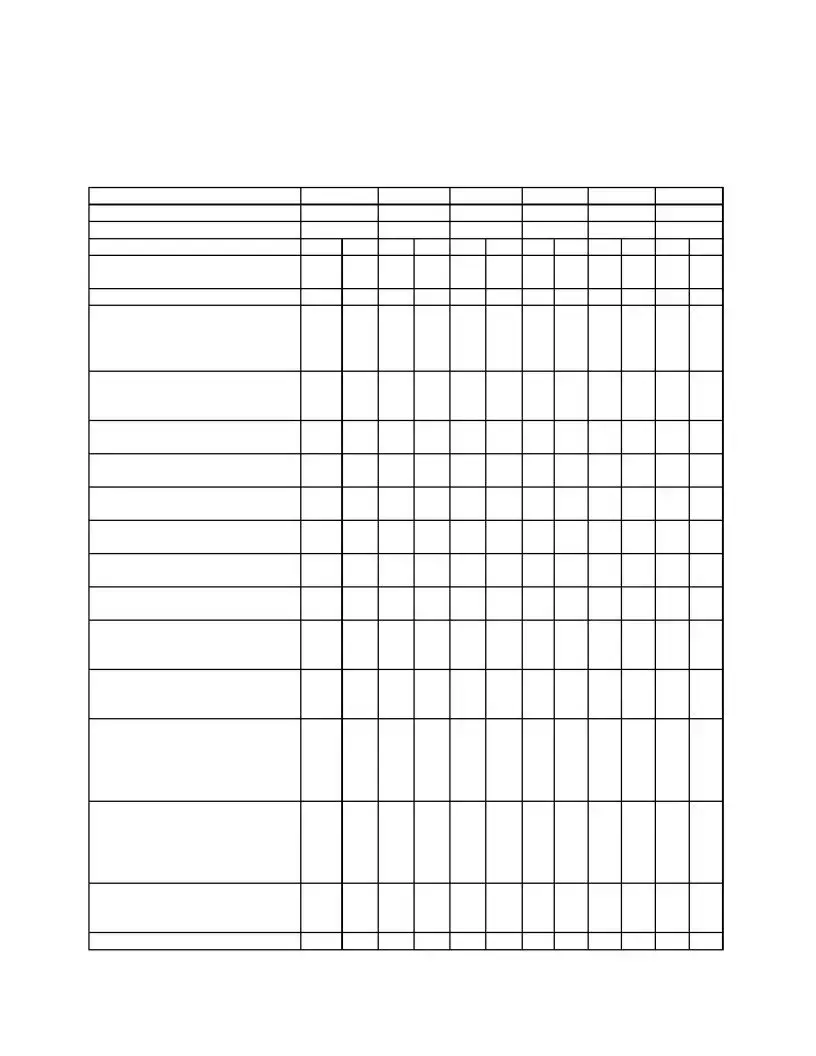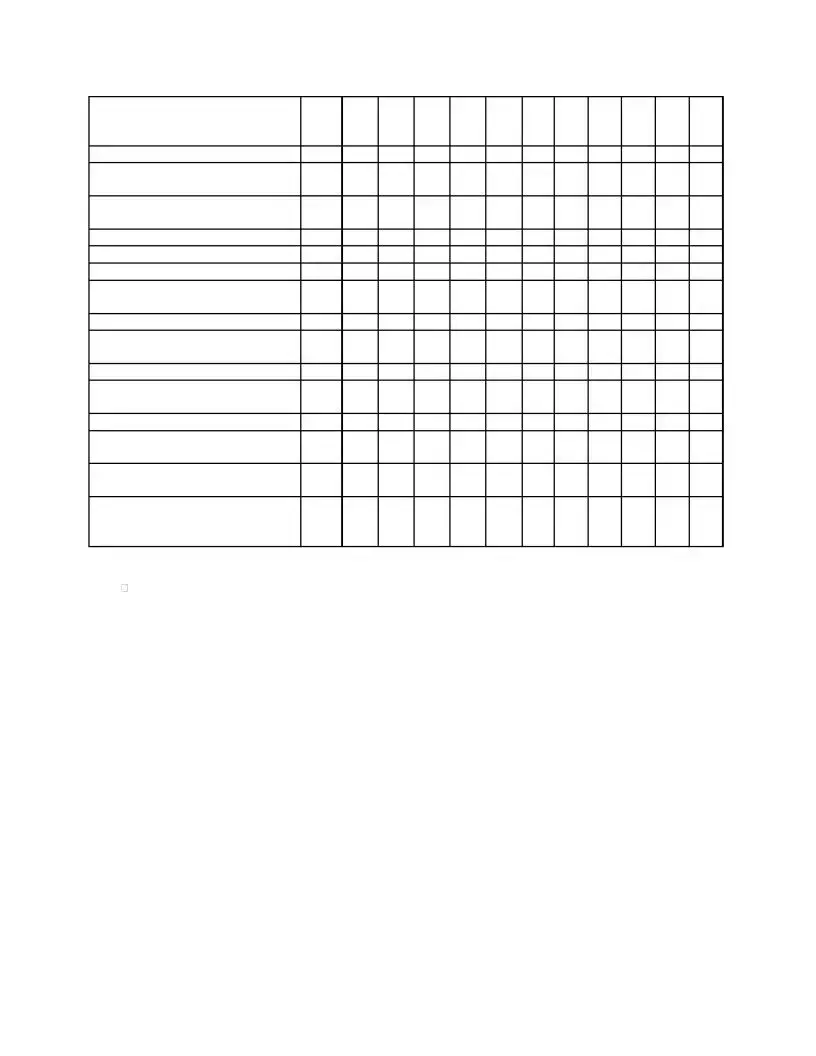Ensuring the safety and operational efficiency of a tractor requires routine inspections before use, for which the Tractor Checklist form is an essential tool. This comprehensive form is designed to guide inspectors through a pre-use evaluation, covering a wide array of critical checkpoints to assess the tractor's condition. It includes assessments of key off procedures, such as inspecting the windshield, tires for proper inflation and signs of wear, and the secure fastening of the three-point hitch assembly. The checklist goes further to evaluate the engine oil and coolant levels, the condition of the PTO master shield, fuel supply, hitch integrity, and the cleanliness and visibility of the SMV sign when operating on roads. Additionally, it ensures turn signals, handrails, steps, and platforms are in good condition and that ROPS are appropriately positioned and secured. The form also prompts a walkthrough to identify potential hazards before operation. Once in the operator's seat, the inspector checks the seat adjustment, seatbelt fastening, instrument gauges, standard equipment functionality including lights and horn, and engine running procedures such as windshield wiper, brakes, parking brake, and hoist operations. This meticulous approach, documented with the inspector's initials and the date of inspection, ensures that any items requiring repair are identified and addressed promptly, thereby maintaining a safe working environment and upholding operational standards.


